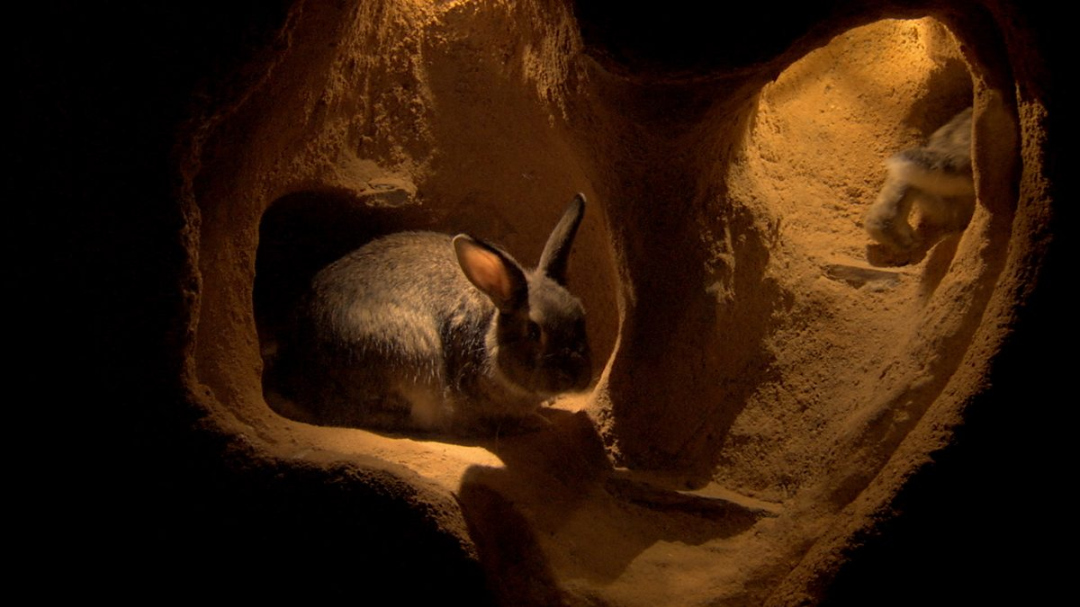Do Rabbits Burrow Underground?
Rabbits are small mammals known for their cute appearance and long ears. They are also known for their burrowing behavior, which is a common characteristic among many rabbit species. Burrowing refers to digging tunnels or burrows underground as a means of shelter, protection, and even reproduction. In this article, we will explore the reasons why rabbits burrow underground and how they go about doing it.

Reasons for Burrowing
Rabbits burrow underground for several reasons, including:
- Shelter: Burrows provide rabbits with a safe and secure shelter from predators, extreme weather conditions, and other potential dangers. The underground tunnels act as a natural fortress, offering protection from above-ground threats.
- Temperature regulation: Rabbits are particularly sensitive to temperature changes, and burrows help them maintain a comfortable and consistent body temperature. The underground environment offers insulation, ensuring that rabbits stay warm during winter and cool during summer.
- Reproduction: Burrows serves as a safe haven for rabbits to give birth and raise their young. These underground chambers provide protection from predators, allowing the young rabbits, known as kits, to grow without fear of being harmed.
- Escape routes: Rabbits are agile and fast runners, but when faced with a threat, they prefer to escape via their burrows. These tunnels provide a quick and efficient means of escape, allowing rabbits to evade predators.
The Burrowing Process
The burrowing process typically starts with a rabbit digging a small entrance hole. Using its strong forelimbs and sharp claws, the rabbit begins to dig vertically into the ground. As the digging progresses, the rabbit will create a tunnel system with multiple entrances and exits. These tunnels can extend horizontally for several feet and may even have multiple levels or chambers.
Rabbits use their teeth to gnaw through roots or small rocks that may obstruct their digging progress. They also use their front paws to push away the soil and create a tunnel. This process continues until the burrow is deep enough to meet its needs for safety and protection.
It is important to note that not all rabbit species burrow underground. Some species, such as the cottontail rabbits, prefer to create nests on the surface rather than dig burrows. These nests, known as forms, are shallow depressions lined with grass and fur, providing a safe space for the rabbits to rest and hide.
FAQs about Rabbits and Burrows
1. Why do rabbits create multiple entrances to their burrows?
Rabbits create multiple entrances to their burrows as a survival strategy. Having multiple exits allows rabbits to escape from predators more easily. It also helps to ensure proper ventilation within the burrow, preventing the build-up of harmful gases.
2. How deep can a rabbit burrow?
The depth of a rabbit burrow can vary depending on various factors, such as soil type and predator pressure. In general, rabbit burrows can range from a few inches to several feet deep. Some burrows may have multiple levels, increasing their overall depth.
3. Do rabbits reuse old burrows?
Yes, rabbits often reuse old burrows dug by other animals, such as ground squirrels or prairie dogs. They may modify these existing burrows to suit their needs by adding new tunnels or chambers. This behavior allows rabbits to save time and energy when establishing a new home.
4. Are rabbits social animals that share burrows?
No, rabbits are generally solitary animals that prefer to have their own burrows. However, in some cases, rabbits may share burrows temporarily with their offspring or a mate during the breeding season. Once the young rabbits are old enough, they will typically venture out to establish their own burrows.
In conclusion, rabbits burrow underground for various reasons, including shelter, temperature regulation, reproduction, and escape routes. Their burrowing process involves the creation of tunnels and chambers using their teeth and front paws. While not all rabbit species burrow, those that do find these underground dwellings essential for survival. Understanding the behavior of rabbits and their burrowing habits allows us to appreciate and respect these fascinating creatures even more.
Related Articles…
Copyright Notice:
Images displayed on this website are not our property, but are procured from the internet. If you hold copyrights to any image and wish for its removal, please get in touch with us.